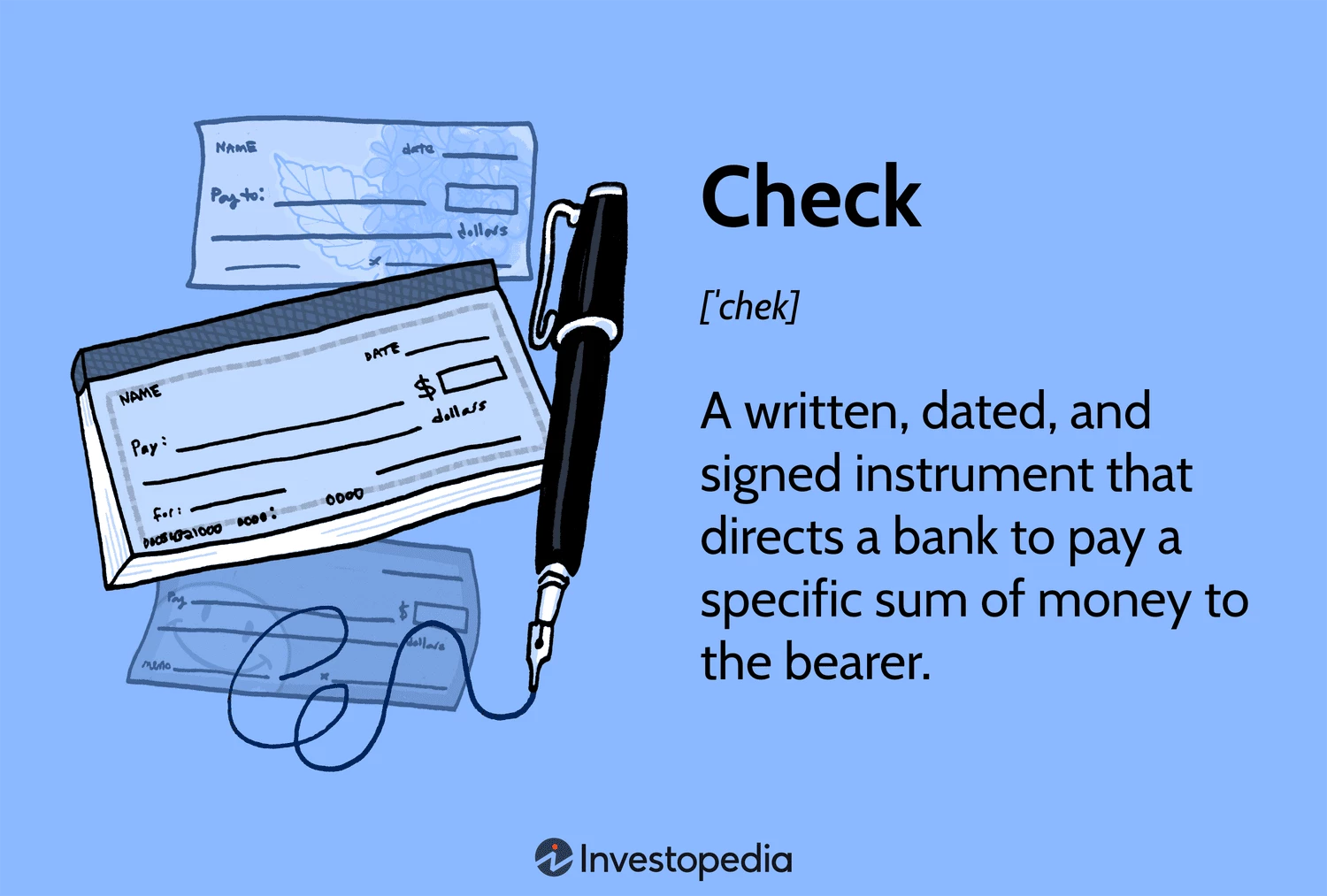Understanding Checks
A check is a written instrument that directs a financial institution to pay a specified amount to the person presenting it. It is typically dated and signed by the person issuing the check, known as the payor or drawer, in favor of the recipient, called the payee. The bank where the funds are held is identified as the drawee, responsible for honoring the check.
Key Points:
- A check is a written order directing a bank to transfer money to the payee.
- Checks facilitate financial transactions between parties without physical currency.
- Essential elements on a check include date, payee details, amount, endorsements, and memo line.
- Various types of checks exist, including certified, cashier’s, and payroll checks.
- In some regions like Canada and England, checks are referred to as “cheques.”
How Checks Operate
A check serves as an instruction to transfer funds from the issuer’s account to the recipient’s account or directly to the payee. It acts as a substitute for cash, enabling safe and efficient monetary transactions among parties.
Checks streamline financial exchanges, offering a secure alternative to physical money, especially for substantial amounts. If misplaced or stolen, checks are safeguarded as only the designated payee can encash them.
Modern financial tools like debit cards, credit cards, wire transfers, and online banking function similarly to checks by facilitating digital payments.
Evolution of Checks
Checks have a long history, with roots tracing back to ancient times, possibly among the Romans. The concept evolved, gaining popularity in the 20th century, especially during the automated check clearance era in the 1950s. Modern electronic payment methods have overshadowed checks, yet they remain in occasional use.
Anatomy of a Check
Checks vary in appearance, but typically include key components. The check’s top left corner displays the issuer’s contact details, while the bank’s identity is prominent.
Essential sections on a check filled by the issuer include:
- Date, in the top right corner
- Payee’s name, center-aligned
- Numerical and written amounts
- Issuer’s signature
Additional features like the memo line provide space for notes, and encoded numbers at the bottom ease processing.
The reverse side accommodates endorsements for check encashment and bank processing stamps to finalize the transaction.
Historically, early American checks date back to the late 18th century, showcasing the enduring legacy of this payment method.
Varieties of Checks
Apart from standard personal checks, specialized types include certified, cashier’s, and payroll checks, tailored for specific financial purposes.
Certified Check
A certified check assures the payee that sufficient funds back the transaction, offering a secure, guaranteed payment method.
Cashier’s Check
A cashier’s check, endorsed by a bank official, assures the recipient of the check’s value, commonly used for major transactions due to its bank-backed security.
Payroll Check
A payroll check, or paycheck, is issued by an employer to remunerate employees for their services, transitioning to digital methods in recent times.
Dealing with Bounced Checks
A bounced check occurs when an account lacks sufficient funds for the check amount, hindering successful transaction processing.
Insufficient funds lead to a bounced check, incurring penalties for the issuer and possibly the recipient.
Additional bank fees for returned items, monthly services, and check-related charges may apply, highlighting the importance of managing finances responsibly.
Frequently Asked Questions (FAQs)
Do Banks Forgive Bounced Checks?
Financial institutions have varying policies on handling bounced checks, often charging fees for insufficient funds. Some banks offer grace periods to rectify the situation and avoid fees.
Do Cashier’s Checks Clear Immediately?
Typically, funds from a cashier’s check deposit become available the following business day, unless sizable amounts trigger partial fund holds, ensuring the check’s clearance.
What Sets Certified and Cashier’s Checks Apart?
Both checks offer heightened security compared to personal checks, with cashier’s checks issued by banks and certified checks by individuals but guaranteed by the bank.
Final Thoughts
Checks remain an essential financial tool, simplifying payments and transfers while enhancing security compared to cash. Understanding the nuances of different check types empowers users to leverage these instruments effectively in various financial transactions when needed.
